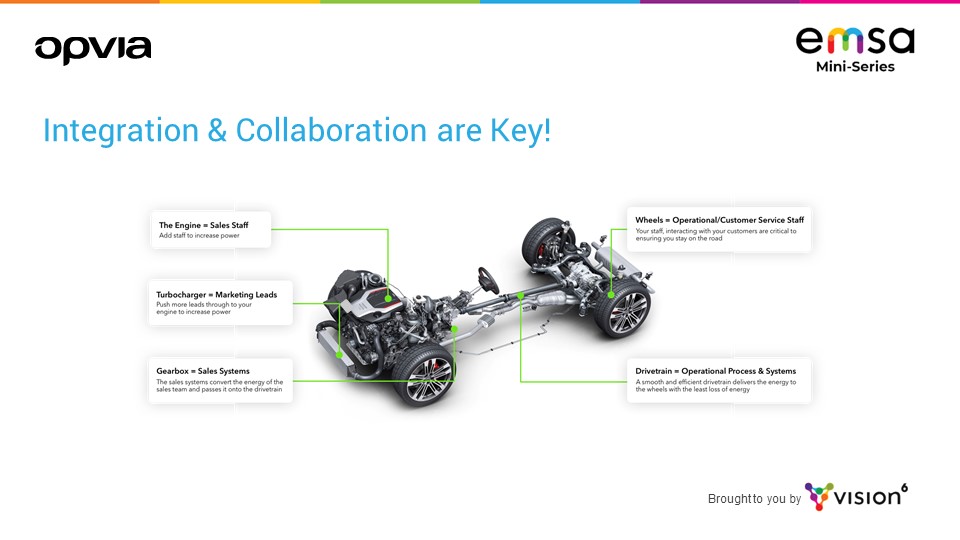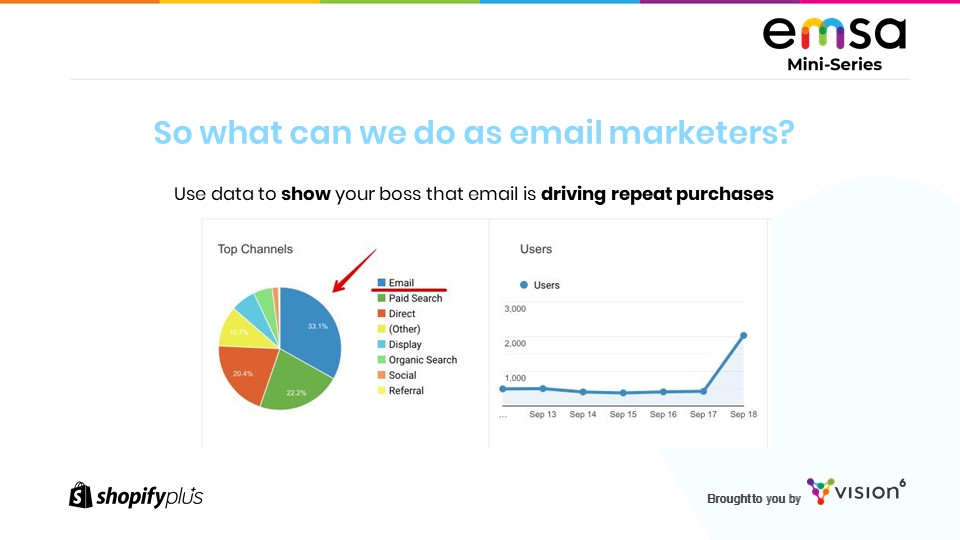What we learnt at the EMSA Mini-Series, Brisbane in October.
Recently we held the EMSA Mini-Series in Brisbane. It was a new take on our time-held and well-loved full-day Email Marketing Summit. If you weren’t lucky enough to secure a seat or you want a recap of our learnings keep reading!
Integration and collaboration are key
The ample experience that Matt Hollis has had certainly put him in good stead to advise us on tech stacks. In fact, Matt says that if you want to see how other people do their tech stacks, to get into acquisitions because you get to see everything. And he was in acquisitions for seven years, so he should know.
Matt’s key takeaway was to integrate and collaborate. All systems need to be working together, just like departments. He compared a business to a car. “The engine produces the power but without the gearbox, the drive chain and the wheels you don’t go anywhere.” Marketing is the engine, dragging the leads into the business but marketing are not going to get their ROI without the rest of the business to support them.
Here are some things Matt suggests you keep in mind when considering tech stacks.
- Get the right size system for your business. The effort needs to be relevant to your skills and time. Consider outsourcing as an option.
- Marketing systems aren’t forever. Consider keeping a system for one to two years because five years is forever for a system and, besides, who knows what we could be doing in five years.
- Retain control of important systems. They are your keys to success, so select technology you can drive yourself where possible.
- Consider data and reports that the entire company will want. Don’t wait until people chase you for certain data to find out your system can’t produce it. Include data and reports in your tech review before you purchase. After all, the CFO is the one who will be scrutinizing your spend!
So how do you go about finding the right tech stack?
Matt suggests you always start with a requirement document. This is like your tech stack brief and can act as the scorecard for the system. When creating your requirement document stay focused on what you need now and up to 2 years in the future. And make sure it works with your current operations and the tools you may need in the future.
To find out what tech stacks are available, network or do some internet research. Matt is a big fan of the g2stack website.
Then CHECK IT against your requirement document to make sure it will tick all of your boxes.
Many thanks to Matt for sharing his extensive experience with us.
“Many companies are data rich but information poor.”
Paul Cochrane, our second speaker, used this quote from Avinash Kaushik to emphasise that while most companies have data galore, they don’t always have the context required to get the most important information from the data.
He certainly has the experience to know what information we should be getting from our data. He’s the Merchant Success Manager at Shopify Plus and before that was a successful e-commerce merchant.
Paul’s key point was to find out what the North Star metric of your company is and how your lower-level metrics contribute to that. Your North Star, or guiding metric might be revenue, registrations, even engagement related. A common revenue related metric is LTV:CAC.
LTV is the Lifetime Value of a customer and can be worked out by total sales divided by the number of customers in a set timeframe. CAC is Customer Acquisition Cost and can be calculated by marketing spend divided by the number of new customers in a set timeframe. CLV:CAC tells you how healthy your business is and most venture capitalists recommend an LTV:CAC of 3:1.
Here are Paul’s tips for painting a picture of the business impact your marketing is having.
- Communicate! Make sure you know your company’s North Star metrics.
- Show the value of your activities. How do your activities contribute to getting to the final outcome?
- Paint the right picture with data. Don’t be restricted to first-click only, interaction might have started with a Google search but it could just be that email you sent that converted.
- Monitor and compare lifetime value by platform. This will highlight, and let you show, the important platforms to the business.
- Communicate data as levers that can be pulled to reach goals. For example, if a little more could be spent on email marketing, then open rates (your data lever) could be improved, which could improve the North Star metric for the company.
Thank you, Paul, for your insight into ROI.
“Time is the most valuable thing we have, please don’t squander it.”
Our last speaker, Luke Harrison, spoke about how we can supercharge our ROI with smarter email campaigns. Luke has an extensive background in email marketing and is now the Marketing Automation Specialist at Sunsuper, where he focuses on leading marketing automation and digital marketing initiatives. To achieve smarter email campaigns Luke suggests we concentrate on our most precious, and possibly finite, resources – time.
There is no instant formula to super-boost your ROI, says Luke, so we need to be spending our time on the most valuable emails that you send. How do we know what are our most valuable emails? The good news, according to Luke, is that anyone can work this out with a little time and effort, and here’s how.
- Establish the effort spent on the emails you send. Log your own time and any designer’s time, but you don’t need to go crazy. Use rough approximations or even scores from one to ten based on how hard this email was to produce.
- Identify the return of effort. Ideally, this would be dollars returned, but it could also be website traffic or end-point conversion.
- Review high performing automated email campaigns, looking for improvements. By simply changing a CTA, Sunsuper saw a 96% uplift on one of their automated emails. The math on that = time well spent!
- Catalogue ideas and future plans. Keep them in two separate buckets: can do, which can be actioned; and too difficult. Sounds kooky, right? But Luke makes an excellent point when he says that this too difficult bucket will form your ammunition to request the decision-makers to enact the change you need to progress.
- Have the hard conversations, supported by evidence. This might be Luke’s most obvious but valuable tip to help us spend our time on the most valuable emails.
Thanks to Luke for enlightening us all.
Phew! That was a lot but there was so much knowledge shared on the day. If you’d like to learn more watch the recording from the morning.
Photos from the morning
We’ve uploaded an album with snaps from the day, so check it out and make sure you tag yourself in the photos.
Thanks again to the amazing speakers who shared their experience, the people that came along and those who completed the feedback survey. We’ll be using this to make the next event even better. If you’d like to keep in touch to find out about our next EMSA event, join the mailing list.






